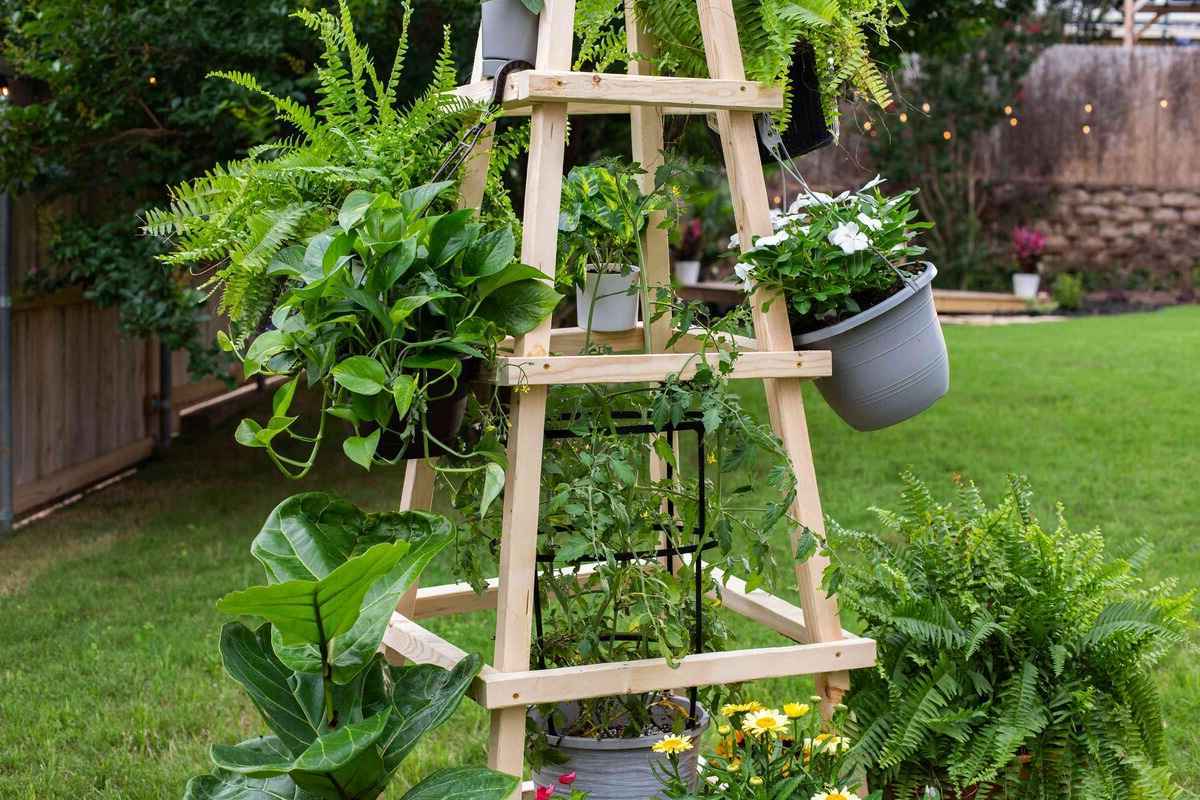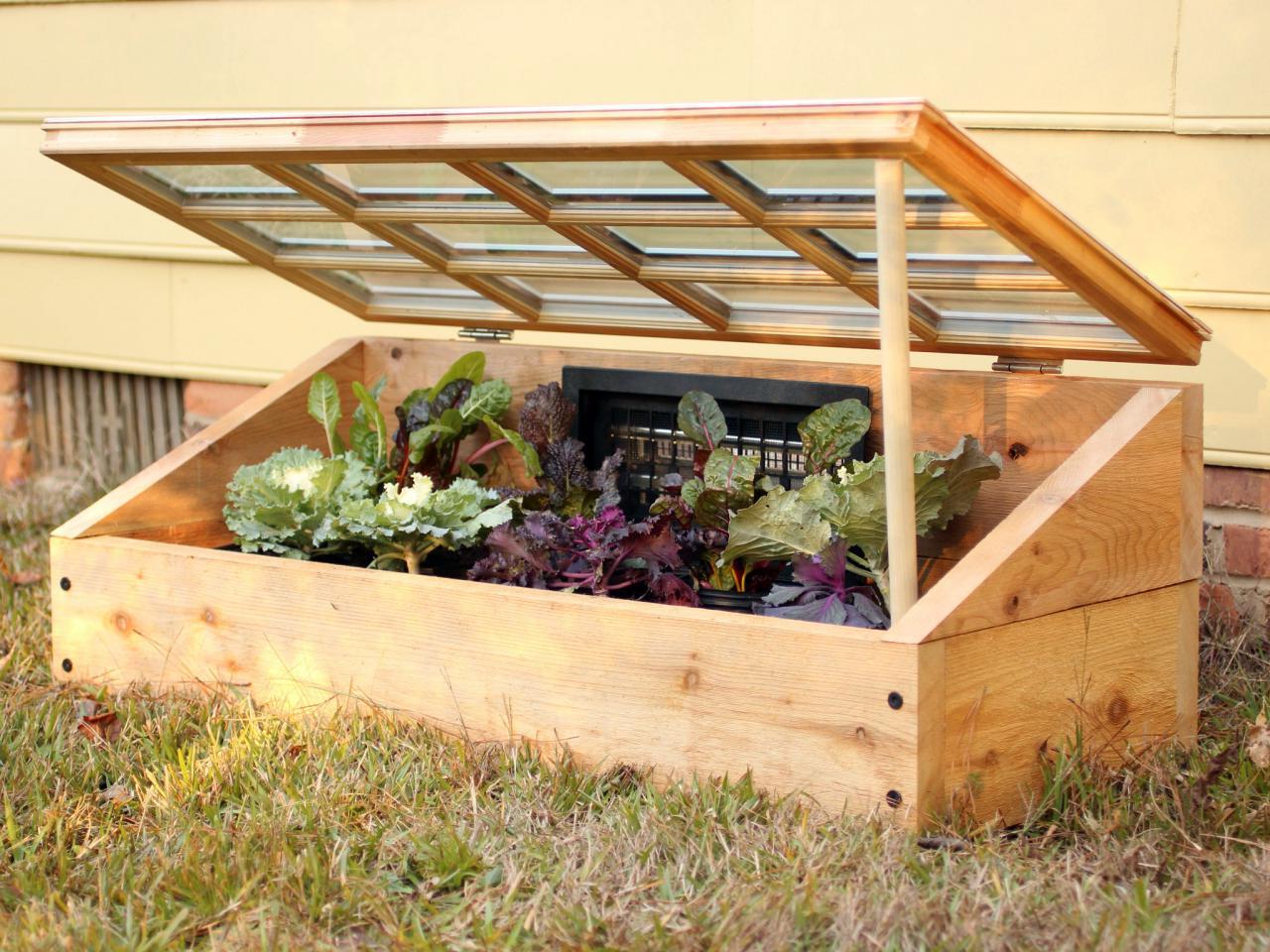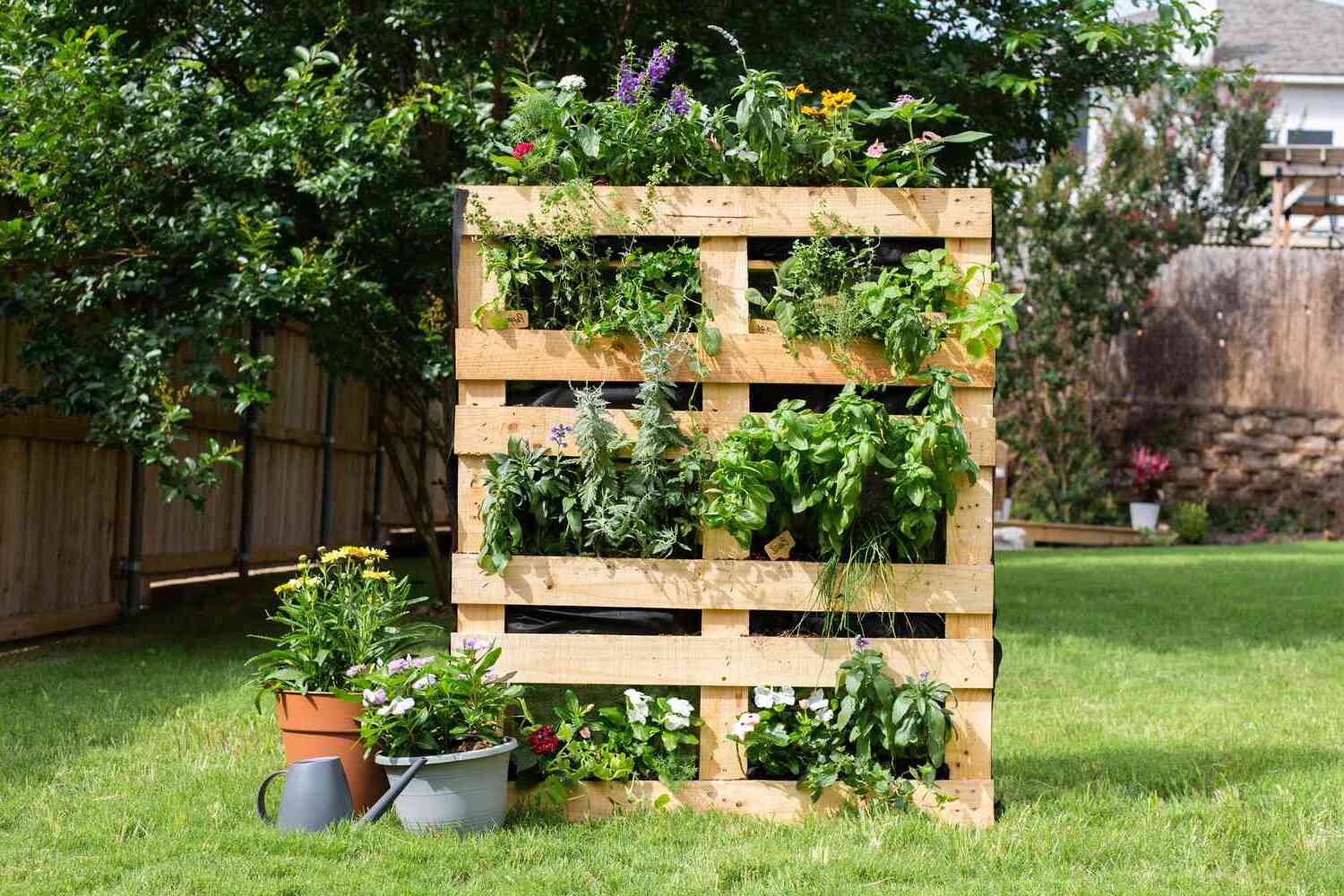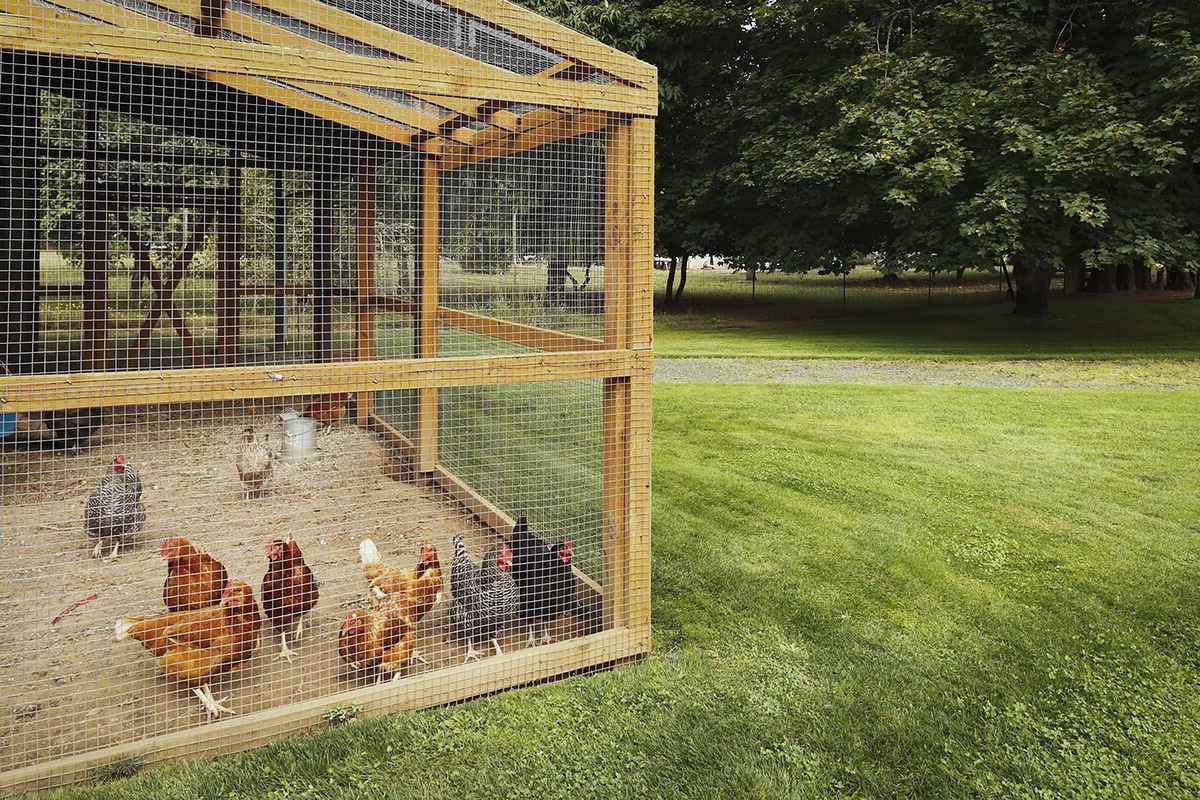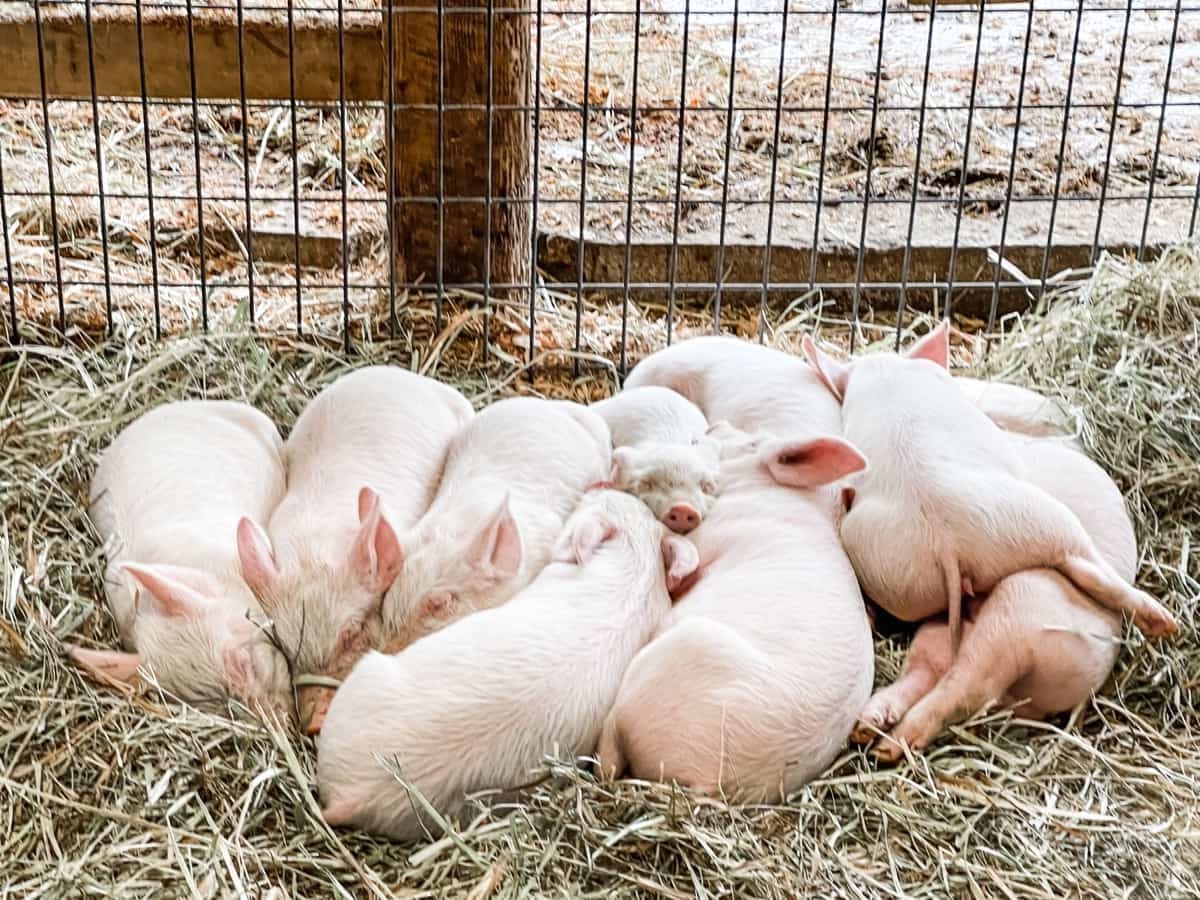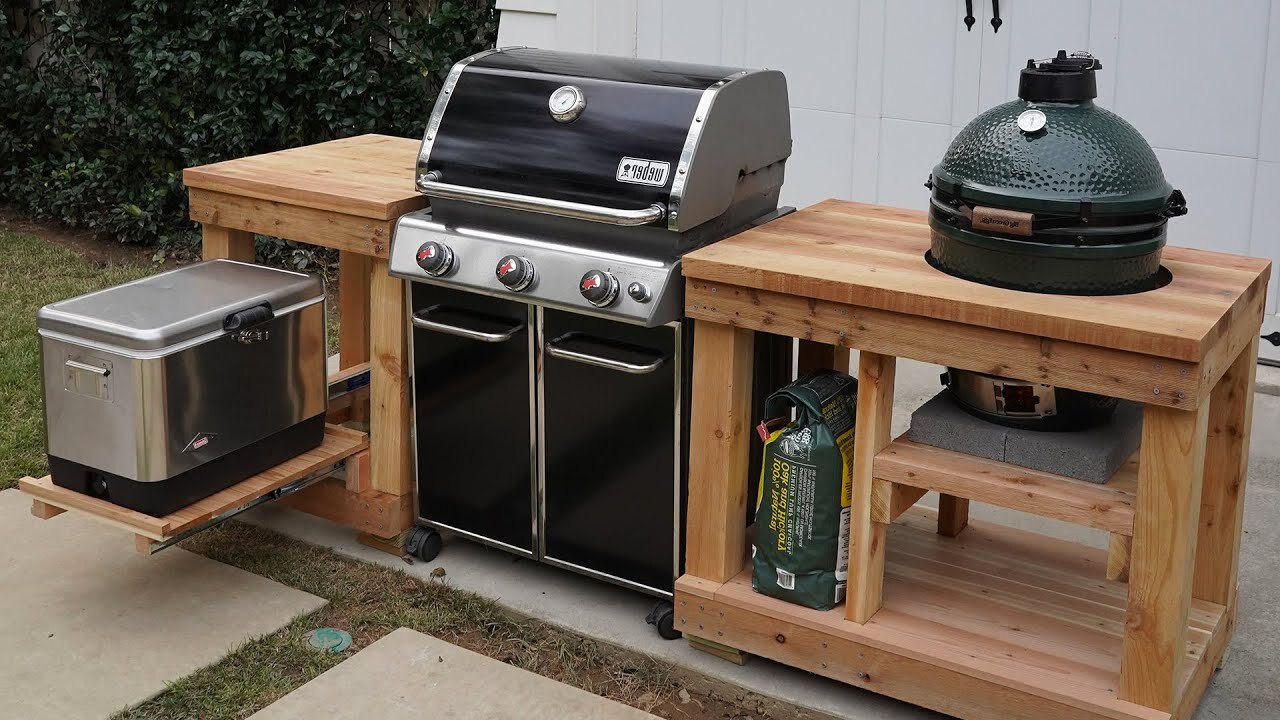Home>Create & Decorate>DIY & Crafts>DIY Aquaponics: How To Build Your Own Sustainable Garden
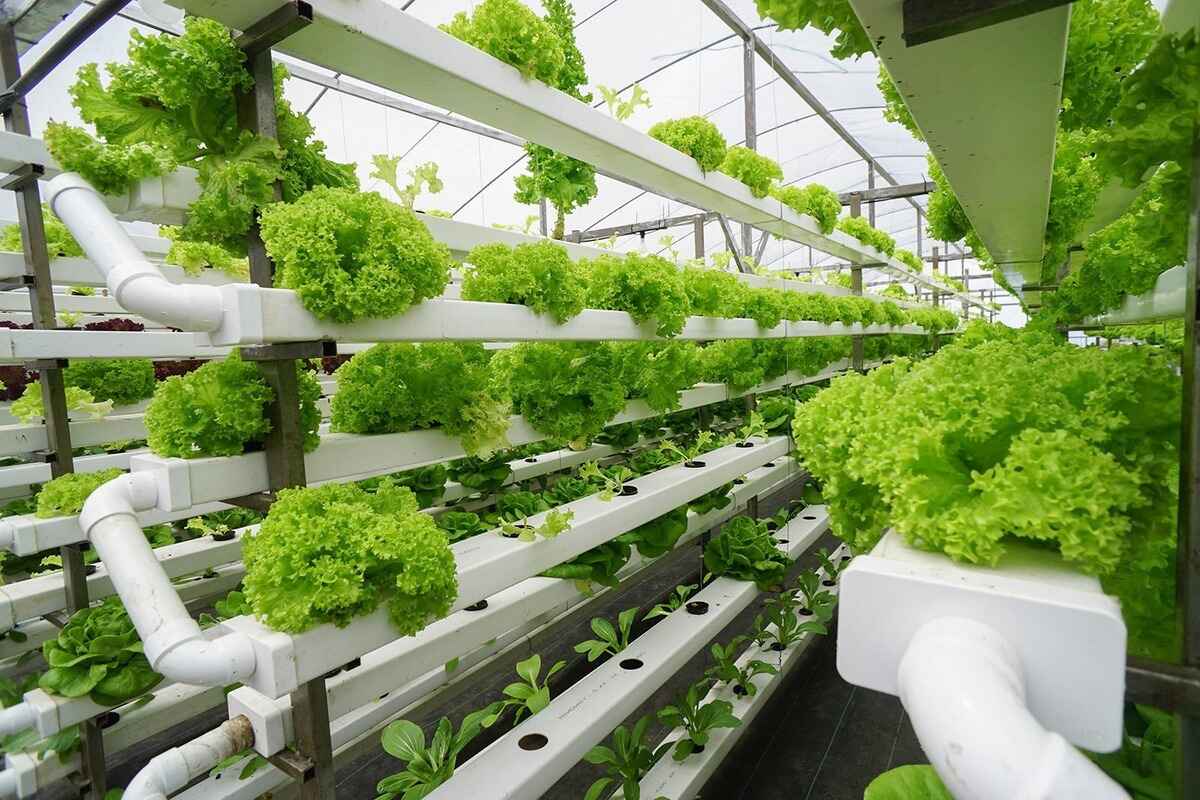

DIY & Crafts
DIY Aquaponics: How To Build Your Own Sustainable Garden
Published: April 29, 2024

Senior Editor in Create & Decorate, Kathryn combines traditional craftsmanship with contemporary trends. Her background in textile design and commitment to sustainable crafts inspire both content and community.
Learn how to create a sustainable garden with our DIY aquaponics guide. Discover tips and tricks for building your own system at home. Ideal for DIY & Crafts enthusiasts!
(Many of the links in this article redirect to a specific reviewed product. Your purchase of these products through affiliate links helps to generate commission for Twigandthistle.com, at no extra cost. Learn more)
Introduction
Are you looking for a sustainable and eco-friendly way to grow your own fresh produce at home? DIY aquaponics might just be the solution you've been searching for. By combining aquaculture (raising fish) and hydroponics (growing plants in water), aquaponics creates a self-sustaining ecosystem where fish waste provides the nutrients for plants, and the plants help to purify the water for the fish. In this article, we will guide you through the process of building your own DIY aquaponics system, from understanding the basics to maintaining a thriving aquaponics garden. Let's dive in and explore the world of sustainable gardening with aquaponics!
Read more: How To Build An Aquaponics Greenhouse
Understanding Aquaponics
Aquaponics is a sustainable and efficient method of cultivating both fish and plants in a closed-loop system. In this symbiotic environment, fish waste provides an organic food source for the plants, and in turn, the plants naturally filter and purify the water for the fish. This natural cycle creates a harmonious ecosystem where both the fish and plants thrive. Unlike traditional soil-based gardening, aquaponics conserves water as it recirculates through the system, making it an environmentally friendly option for home gardeners.
Benefits of Aquaponics
- Sustainability: Aquaponics uses less water compared to traditional gardening methods, making it an eco-friendly choice.
- Space-Efficient: It's suitable for small spaces, making it ideal for urban dwellers or those with limited outdoor space.
- Year-Round Harvest: With the right setup, aquaponics allows for year-round cultivation of fresh produce regardless of the season.
- Low Maintenance: Once established, aquaponics systems require minimal maintenance compared to traditional gardens.
Components of an Aquaponics System
- Fish Tank: This is where the fish are raised. The fish waste produced in the tank serves as a nutrient source for the plants.
- Grow Bed: The grow bed contains the plants and is where the nitrification process occurs, converting fish waste into nutrients for the plants.
- Water Pump: The pump circulates the water from the fish tank to the grow bed, ensuring that the plants receive the necessary nutrients.
- Piping and Tubing: These components facilitate the flow of water between the fish tank and the grow bed, creating a continuous cycle.
How Aquaponics Works
In an aquaponics system, fish excrete ammonia through their waste. Beneficial bacteria then convert the ammonia into nitrites and subsequently into nitrates, which serve as a natural fertilizer for the plants. The plants, in turn, absorb these nutrients, effectively filtering the water and returning it to the fish tank in a purified state. This cycle repeats, creating a self-sustaining ecosystem where both the fish and plants flourish.
Understanding the principles and components of aquaponics is crucial before embarking on building your own system. With this knowledge, you'll be well-equipped to plan and construct a successful DIY aquaponics garden.
Read more: How To Build A Pond
Planning Your DIY Aquaponics System
When embarking on the journey of creating your own DIY aquaponics system, thorough planning is essential for a successful and sustainable setup. Here are the key steps to consider when planning your aquaponics system:
1. Location and Space
Before diving into the construction phase, consider the location for your aquaponics system. Whether you opt for an indoor or outdoor setup, ensure that the area receives an adequate amount of sunlight for the plants to thrive. Additionally, assess the available space to determine the size and scale of your aquaponics system.
2. System Design
Decide on the design and layout of your aquaponics system. Will it be a media-based system, a nutrient film technique (NFT) system, or a deep water culture (DWC) system? Each design has its own advantages and considerations, so choose one that aligns with your space, resources, and gardening goals.
3. Fish and Plant Selection
Selecting the right combination of fish and plants is crucial for a balanced aquaponics ecosystem. Consider the types of fish you want to raise and the plants you wish to grow. Certain fish species, such as tilapia and trout, thrive in aquaponics environments, while leafy greens, herbs, and fruiting plants are popular choices for aquaponic cultivation.
Read more: How To Build An Earthship
4. Equipment and Materials
Compile a list of necessary equipment and materials for your aquaponics system. This may include a fish tank, grow bed, water pump, piping, grow media, and testing kits for monitoring water quality. Research and invest in high-quality components to ensure the longevity and efficiency of your system.
5. Water and Nutrient Management
Develop a plan for managing the water and nutrient levels in your aquaponics system. Consider the water pH, temperature, and oxygen levels required for both the fish and plants. Additionally, familiarize yourself with the nitrogen cycle and the role of beneficial bacteria in maintaining water quality.
6. Budget and Timeline
Establish a budget for your DIY aquaponics project, accounting for the costs of materials, equipment, and ongoing maintenance. Create a realistic timeline for the construction and implementation of your system, allowing for adjustments and unforeseen challenges along the way.
By carefully planning each aspect of your DIY aquaponics system, you can set the stage for a thriving and sustainable garden that provides a continuous harvest of fresh produce while nurturing a flourishing aquatic ecosystem.
Building the Aquaponics System
Now that you have a solid plan in place, it's time to roll up your sleeves and start building your DIY aquaponics system. Here's a step-by-step guide to constructing the key components of your aquaponics setup:
Read more: How To Build A Steam Room
1. Constructing the Fish Tank
The fish tank serves as the central hub of your aquaponics system. Choose a durable and appropriately sized container to house your fish. Ensure that the tank is made of non-toxic materials and can withstand the weight of the water and fish. Position the tank in a stable location, considering factors such as sunlight exposure and accessibility for maintenance.
2. Building the Grow Bed
The grow bed is where your plants will thrive, so it's essential to construct a sturdy and well-draining bed. Common materials for building a grow bed include wood, plastic, or concrete. Line the bottom of the grow bed with a protective barrier to prevent soil and debris from entering the system. Fill the grow bed with an appropriate growing medium, such as expanded clay pellets or gravel, to support plant growth and the nitrification process.
3. Installing the Water Pump and Piping
Position the water pump in the fish tank and connect it to the piping that will transport the water to the grow bed. Ensure that the pump is capable of circulating water effectively throughout the system. Install a bell siphon or an alternative drainage system in the grow bed to regulate the water level and prevent flooding.
4. Assembling the Plumbing and Filtration
Set up the plumbing to facilitate the flow of water between the fish tank and the grow bed. Incorporate a filtration system, such as a solids filter or swirl filter, to remove fish waste and debris from the water before it reaches the grow bed. This helps maintain water clarity and prevents clogging in the system.
Read more: How To Build A Compost Bin
5. Establishing the Aeration System
Proper aeration is crucial for the health of the fish and the overall stability of the aquaponics ecosystem. Install an aeration system, such as air stones or diffusers, in the fish tank to ensure adequate oxygen levels for the fish. Oxygenation is essential for the nitrification process and the well-being of the aquatic inhabitants.
6. Testing and Cycling the System
Before introducing fish and plants, thoroughly test the system for leaks, proper water flow, and optimal conditions. Cycle the system by adding ammonia to initiate the growth of beneficial bacteria. Monitor the water parameters, including pH, ammonia, nitrites, and nitrates, to ensure that the environment is suitable for both the fish and plants.
By following these steps and paying attention to the details, you can construct a robust and efficient aquaponics system that provides a thriving habitat for fish and a bountiful harvest of fresh, homegrown produce. With the foundation of your aquaponics system in place, you're well on your way to reaping the rewards of sustainable gardening and aquaculture.
Choosing the Right Fish and Plants
When it comes to selecting the fish and plants for your aquaponics system, thoughtful consideration is key to establishing a balanced and thriving ecosystem. Here's a guide to help you make informed choices for your aquaponics garden:
Choosing the Right Fish
-
Tilapia: Tilapia is a popular choice for aquaponics due to its rapid growth and adaptability to varying water conditions. These hardy fish are well-suited for aquaponics systems and are known for their mild-tasting fillets.
-
Trout: If you live in a cooler climate, trout can be an excellent option for your aquaponics setup. They prefer cooler water temperatures and can thrive in well-oxygenated environments.
-
Catfish: Catfish are another common choice for aquaponics enthusiasts. They are resilient and can tolerate a wide range of water conditions, making them suitable for different aquaponics setups.
-
Koi and Goldfish: For ornamental purposes, koi and goldfish can add aesthetic appeal to your aquaponics system. These fish are known for their vibrant colors and can coexist harmoniously with the plants in the aquaponics environment.
Read more: How To Build A Putting Green In Backyard
Choosing the Right Plants
-
Leafy Greens: Plants such as lettuce, kale, spinach, and Swiss chard are well-suited for aquaponics. They thrive in the nutrient-rich water and can be prolific producers in the system.
-
Herbs: Herbs like basil, mint, cilantro, and parsley flourish in aquaponics setups. Their aromatic leaves and culinary versatility make them popular choices for home aquaponics gardens.
-
Fruiting Plants: While challenging, certain fruiting plants like tomatoes, peppers, and strawberries can be grown in aquaponics systems. These plants require adequate support and attention to their nutrient needs but can yield flavorful fruits when well-cared for.
-
Flowering Plants: For aesthetic appeal and pollinator attraction, consider incorporating flowering plants such as marigolds or nasturtiums. These plants not only add beauty to the system but also support beneficial insect populations.
By selecting the right combination of fish and plants, you can create a harmonious aquaponics ecosystem that provides a sustainable source of fresh produce while nurturing a thriving aquatic habitat. Keep in mind the specific requirements of each species and variety, and tailor your choices to suit the conditions of your aquaponics system.
Maintaining Your Aquaponics Garden
Maintaining your aquaponics garden is essential for the long-term success of your system and the well-being of your fish and plants. Regular upkeep and monitoring of key parameters will help ensure a thriving and sustainable aquaponics ecosystem. Here are the crucial aspects of maintaining your aquaponics garden:
Monitoring Water Quality
Regularly test the water parameters, including pH, ammonia, nitrites, and nitrates, to ensure that the aquatic environment remains conducive to both fish and plant life. Monitoring the water quality is vital for the health of the fish and the effectiveness of nutrient uptake by the plants. Invest in reliable water testing kits and establish a routine for conducting water tests.
Feeding and Care of Fish
Provide a balanced and appropriate diet for your fish, taking into account their nutritional needs and growth stages. Overfeeding should be avoided to prevent excess waste production, which can lead to water quality issues. Monitor the behavior and health of the fish, and address any signs of illness or stress promptly. Regularly clean the fish tank and remove any accumulated debris to maintain a clean and healthy aquatic environment.
Pruning and Harvesting
Regularly inspect and prune the plants to promote healthy growth and prevent overcrowding. Harvest mature crops as needed to encourage continuous production and prevent the depletion of nutrients in the system. Proper plant maintenance and harvesting practices contribute to the overall balance and productivity of the aquaponics garden.
System Maintenance
Inspect the components of your aquaponics system, including the water pump, piping, and filtration system, for any signs of wear, blockages, or malfunctions. Clean and maintain the equipment as recommended by the manufacturer to ensure optimal performance. Address any leaks or structural issues promptly to prevent disruptions in the water flow and overall system function.
Pest and Disease Management
Monitor the plants for signs of pests or diseases and take appropriate measures to address any issues. Implement natural pest control methods and avoid the use of chemical pesticides, which can negatively impact the aquatic ecosystem. Maintaining a healthy balance of beneficial insects and microorganisms in the aquaponics system can help prevent pest infestations and disease outbreaks.
Nutrient Management
Regularly assess the nutrient levels in the system and supplement as needed to support plant growth. Adjust the fish feeding regimen and monitor the nitrification process to maintain optimal nutrient levels for the plants. Balancing nutrient uptake and replenishment is crucial for sustaining healthy plant growth and overall system productivity.
By staying proactive in the maintenance of your aquaponics garden, you can foster a self-sustaining ecosystem that yields a continuous harvest of fresh produce while providing a thriving habitat for fish. Consistent care and attention to the various aspects of aquaponics maintenance will contribute to the overall success and sustainability of your DIY aquaponics system.
Read more: How To Build Raised Planter Boxes
Troubleshooting Common Issues
Even with careful planning and maintenance, aquaponics systems may encounter common issues that require troubleshooting to ensure the continued health and productivity of the ecosystem. Here are some common problems that aquaponics enthusiasts may encounter and the corresponding troubleshooting measures:
Fluctuating pH Levels
Issue: Fluctuations in pH levels can impact the overall health of both the fish and plants in the aquaponics system. pH levels that are too high or too low can hinder nutrient uptake and compromise the well-being of the aquatic inhabitants.
Troubleshooting: Regularly monitor the pH levels and implement measures to stabilize them within the optimal range for both the fish and plants. Adjust the pH using natural buffers or pH-adjusting solutions to maintain a balanced and suitable environment.
Poor Plant Growth
Issue: Slow or stunted plant growth may indicate nutrient deficiencies or imbalances in the aquaponics system. Inadequate nutrient levels can hinder the development of healthy plants and impact overall productivity.
Troubleshooting: Assess the nutrient levels in the system and supplement as needed to support robust plant growth. Ensure that the nitrification process is functioning effectively to provide the necessary nutrients for the plants. Adjust the fish feeding regimen and monitor the nutrient uptake to address any deficiencies.
Fish Health Issues
Issue: Signs of stress or illness in the fish, such as abnormal behavior or discoloration, can indicate underlying health issues within the aquaponics system. Poor water quality or inadequate oxygenation can contribute to fish health problems.
Troubleshooting: Conduct thorough water tests to assess the water quality, including ammonia, nitrite, and nitrate levels. Ensure proper aeration and oxygenation in the fish tank to support the well-being of the fish. Address any water quality issues promptly and seek veterinary guidance if fish health problems persist.
Clogging in the Grow Bed
Issue: Accumulation of debris or clogging in the grow bed can impede water flow and hinder the nitrification process. This can lead to reduced nutrient uptake by the plants and compromised water circulation.
Troubleshooting: Regularly inspect and clean the grow bed to remove any debris or clogs that may obstruct water flow. Implement appropriate filtration and solids removal systems to prevent debris from entering the grow bed. Maintain a clean and well-draining grow bed to support optimal plant growth.
Algae Overgrowth
Issue: Excessive algae growth in the fish tank or grow bed can disrupt the balance of the aquaponics ecosystem and compete with the plants for nutrients. Algae overgrowth can also lead to reduced water clarity and oxygen levels.
Troubleshooting: Implement measures to control algae growth, such as reducing sunlight exposure to the fish tank and grow bed. Introduce algae-eating organisms, such as certain species of fish or aquatic invertebrates, to help manage algae levels. Maintain proper nutrient levels and water circulation to discourage algae proliferation.
By identifying and addressing these common issues in aquaponics systems, gardeners can maintain a healthy and balanced ecosystem that supports the flourishing of both fish and plants. Regular monitoring, proactive maintenance, and timely troubleshooting are essential for sustaining the productivity and sustainability of DIY aquaponics gardens.
Conclusion
In conclusion, DIY aquaponics offers a sustainable and rewarding approach to home gardening, combining the benefits of aquaculture and hydroponics in a self-sustaining ecosystem. By understanding the principles of aquaponics, carefully planning the system, and selecting the right fish and plants, enthusiasts can create a thriving and eco-friendly garden that yields a continuous harvest of fresh produce. Building and maintaining an aquaponics system requires attention to detail, regular monitoring, and proactive troubleshooting to ensure the health and productivity of the aquatic ecosystem. With the right knowledge and dedication, DIY aquaponics empowers individuals to cultivate their own organic fruits, vegetables, and fish in a space-efficient and environmentally conscious manner. Embracing the principles of sustainability and self-sufficiency, aquaponics enthusiasts can enjoy the bounties of homegrown harvests while contributing to a greener and more resilient future.

